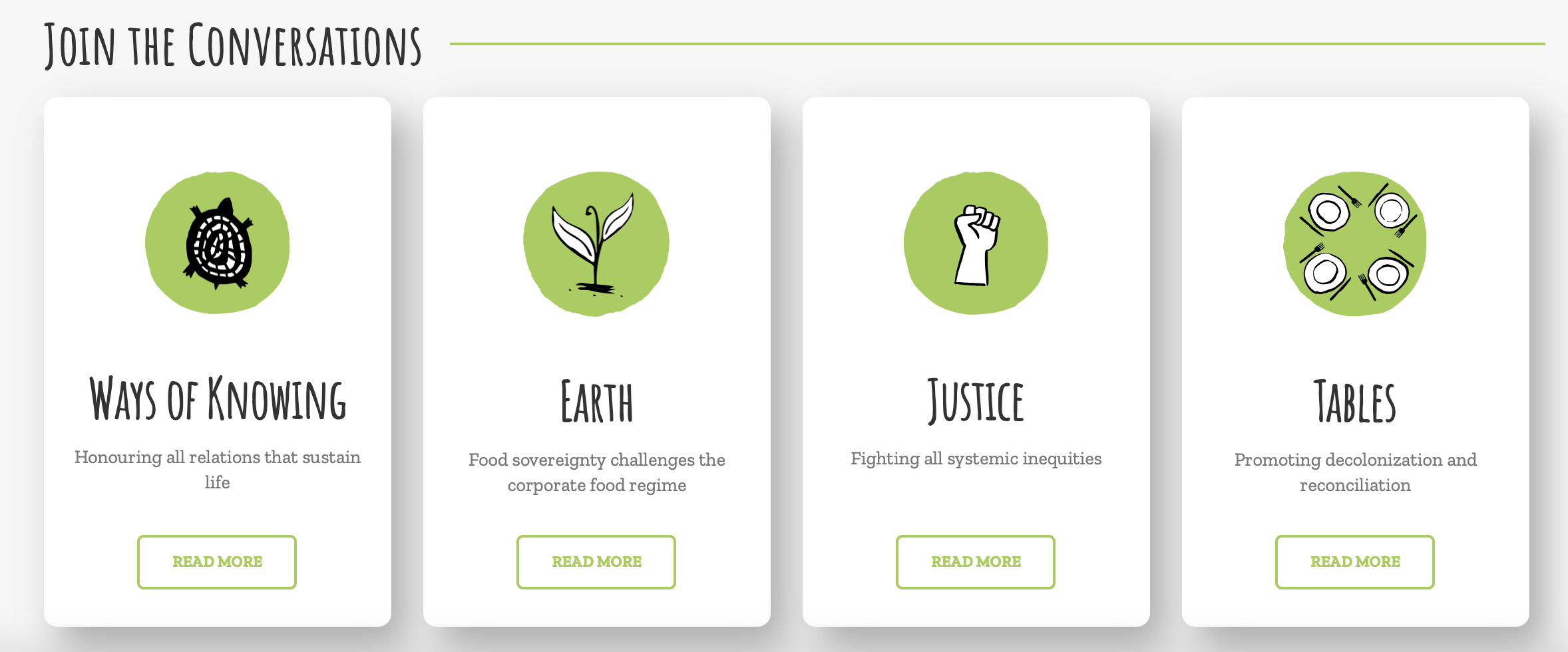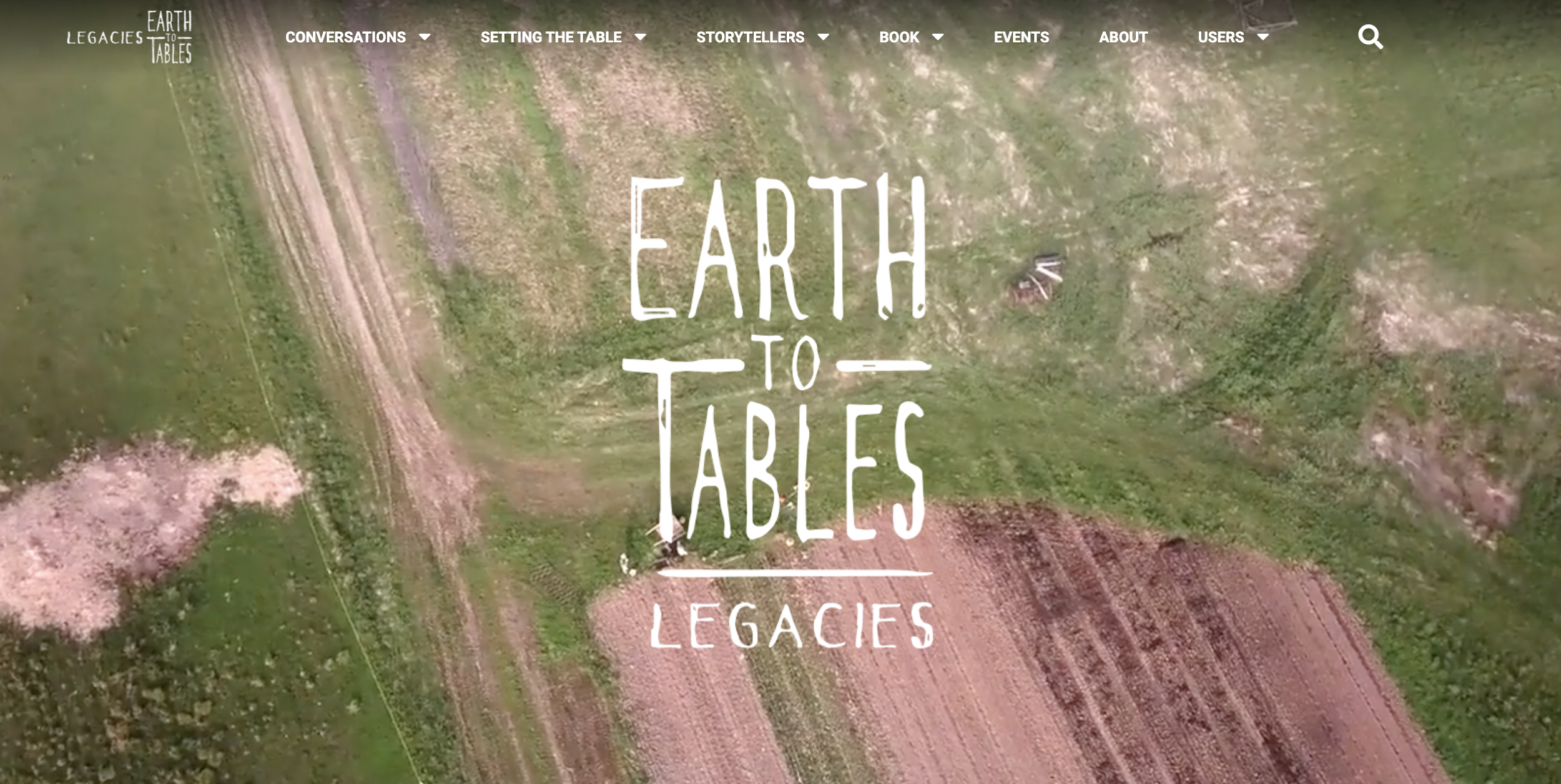Since 2015, a group of food activists have come together to develop and launch the Earth to Tables Legacies project, a multimedia educational package focused on food justice and food sovereignty. The website offers a plethora of resources including compelling videos and facilitator’s guides supplemented by insightful commentary from activists & academics across Turtle Island (North America).
The facilitator’s guides, which accompany each video/photo essay, make this website an incredible tool for educators to bring discussions around pressing topics—such as Indigenous-settler relations, food justice, food sovereignty and anti-racism— into the classroom. These guides can also act as a jumping off point for further research and class discussion, as the guides themselves point to more comprehensive resources.


You can explore the ever-evolving website in a variety of ways – through the 17 collaborators (the “Storytellers”), the framing ideas of dynamic tensions and the collaborative methodology (titled “Setting the Table“) and the 10 videos and 11 photo essays (the “Conversations”).
The Conversations are the heart of the website, sectioned by:
- Ways of Knowing – honouring all relations that sustain life
- Earth – food sovereignty challenges the corporate food regime
- Justice – fighting all systemic inequities
- Tables – promoting decolonization and reconciliation

The facilitator’s guides are divided into three sections, marked by icons that can be found on the right side of any video or photo essay:
- Digging In offers questions for discussion and some hands-on activities
- Continuing the Conversation offers commentaries by academics and activists
- Digging Deeper suggests resources for further research and action
Under the Earth conversation, for instance, “The Soil is Alive” topic includes an 8-minute video that brings viewers into a conversation between a 73-year-old organic farmer in Muskoka, Ontario, and a 42-year-old organic agricultural consultant based in Guadalajara, Mexico. In the video, fungus is described as “the internet of the soil.” This facilitator’s guide, the website explains, can be used to catalyze deeper conversations about the issues of over-cultivation, soil structure, fungal networks, and morphic resonance.
One of the hands-on activities that would be great for the classroom, found in the “Digging In” tab, encourages you to put some soil in a container, add hydrogen peroxide, and observe the reaction as a way to test the soil — “if it creates a lot of bubbles, you know that it is really alive.”
The Justice section provides an important opportunity to learn about systemic inequities and food sovereignty movements. One video looks at “Who Will Feed Us?”, exploring how the farm labour crisis meets the climate crisis. Another video on Black Creek Community Farm highlights how the Toronto farm has worked to respond to some of the structural injustices that exist in Canada, including food access and community health.

Once again, facilitator guides for each offer some great activities and questions to spark dialogue and reflection among older students. (e.g. “How could urban agriculture address issues of food security, food sovereignty and food justice in cities? in your local context?”)
Tables, in addition to photo stories, has videos of powerpoint presentations from Rick Hill—artist, historian, writer and curator living at Six Nations of the Grand River Territory—which provide introductions to the history, philosophy and food legacies of the Haudenosaunee.
These educational packages are a unique and powerful mechanism to connect students to the world around them through food and Indigenous knowledge.
In a teacher testimonial, Nathan Tidridge, a secondary school teacher in Hamilton, Ontario, shares his excitement for using the website with his high school students.
“By grounding the conversation in the land and in our food,” Nathan shares, “my students are now taking those lessons and applying them to other areas of their lives and other systems that they’re encountering in their world.”
You can browse through the themes along the menus at the top and bottom of the website, or in a linear fashion on the Table of Contents page.
 This video on how to navigate Earth to Tables encourages you to go down your own rabbit hole — the hope is that the website will stimulate critical discussions and creative actions throughout many schools and communities.
This video on how to navigate Earth to Tables encourages you to go down your own rabbit hole — the hope is that the website will stimulate critical discussions and creative actions throughout many schools and communities.






[…] The Earth to Tables Legacies project is a multimedia educational package focused on Indigenous-settler relations, food justice, food sovereignty and anti-racism in the food movement. The website offers a plethora of resources including videos and facilitator’s guides supplemented by insightful commentary from activists & academics across Turtle Island. Read more about Earth to Tables here. […]